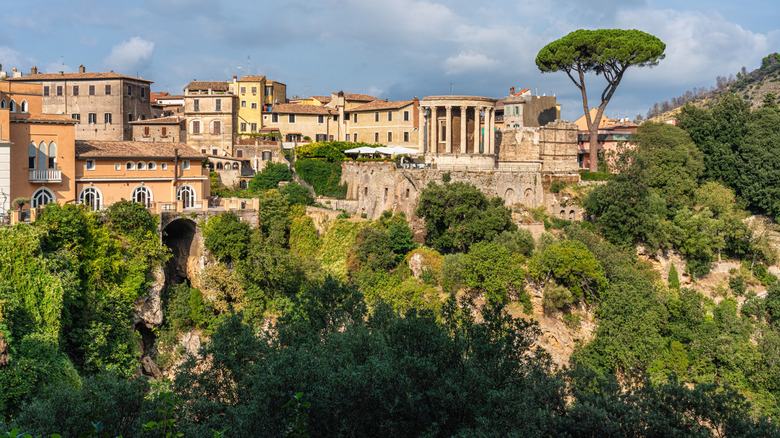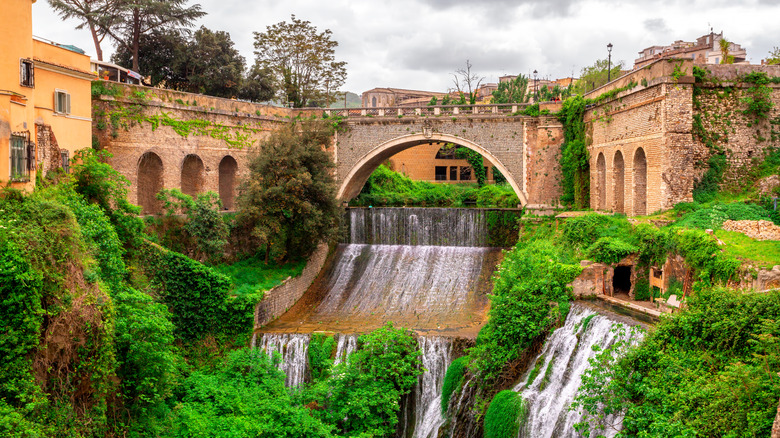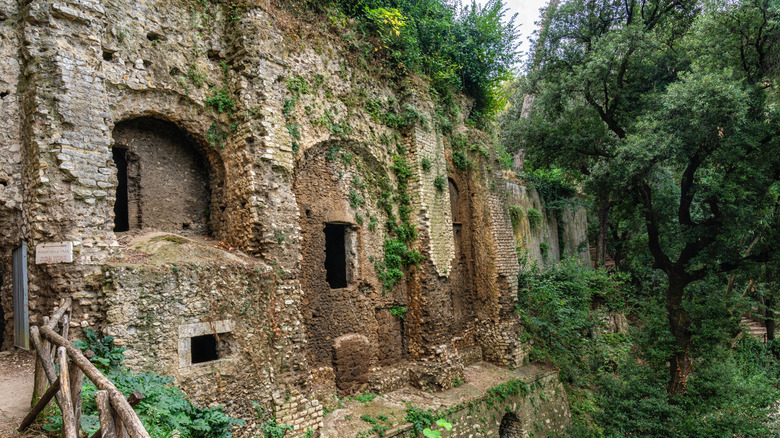Many know Tivoli as an easy and incredible day trip destination from Rome, mainly for the iconic structures of Hadrian’s Villa and the Villa d’Este. The area was a favorite during ancient times and later in the Renaissance era because of its proximity to the capital and its lush, cooler climate. Hadrian’s Villa was the summer retreat of Emperor Hadrian, and Villa d’Este was built in the 16th century as a private residence, known for its resplendent gardens and fountains. Today, the villas are open to the public and are known to get quite packed with tourists. However, there is a third villa in Tivoli that gets less attention and is a stunning blend of nature and architecture, sprawling across a ravine. This is Villa Gregoriana, which has all the grandeur of the other Tivoli villas but in a serene, more secluded setting.
Villa Gregoriana stands out from others because it’s much more than a former dwelling. It includes a full nature park, with waterfalls, forests, and caves. This villa straddles natural and human ingenuity, as well as ancient and modern Roman history. Villa Gregoriana was designed by Pope Gregory XVI in 1832, but it incorporates archeological features (including the villa ruins and a temple) that date back to Ancient Rome. Today, visitors can navigate the historic remnants, hike down the ravine, and explore the cliffside caves for a reasonably priced ticket.
Villa Gregoriana has a town-saving waterfall
When you think of the grandiose villas of Italy (like Lake Como’s world-famous Villa d’Este), they’re often sites that were intentionally designed to house elites and reflect their social status. Interestingly, Villa Gregoriana was established out of necessity rather than pure indulgence. When the park of Villa Gregoriana was commissioned by Pope Gregory XVI, it was to stop flooding caused by the Aniene River. A particularly ruinous flood in 1826 destroyed a vast portion of old Tivoli, prompting the papacy to step in. The river was diverted through a tunnel, from which it now pours out into the gorge as a massive waterfall.
The site for this aquatic diversion was a serendipitous choice. Before the Villa Gregoriana was built, this area housed the villa of Manlius Vopiscus around the second century. Today’s park largely overlaps with the former estate and the so-called Valley of Hell. Much of the ancient villa has crumbled away, but its interior rooms built into the cliffside remain, which you walk through as you make your way down into the ravine. Meanwhile, another ancient site overlooks the park from an acropolis: the Temple of Vesta, a round, preserved temple from the first century B.C. Its crescent of columns is an iconic sight looming over the ravine and waterfalls.




